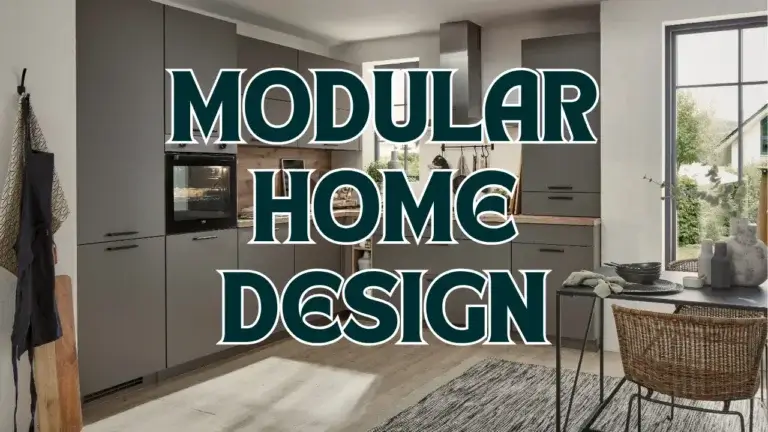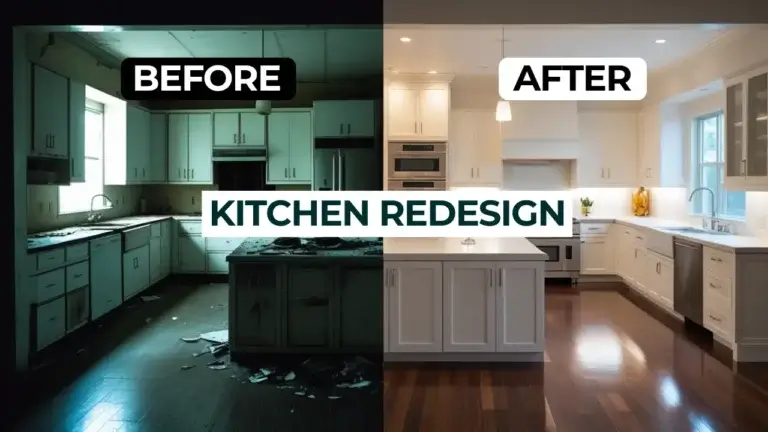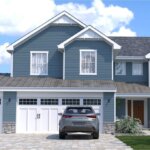Designing or remodeling a home’s interior isn’t just about picking colors and textures—it’s about balancing vision with budget. Whether you’re moving into a new house or giving your current space a complete makeover, understanding the total cost involved is crucial. With the ever-evolving US housing market and inflation influencing material and labor prices, homeowners need a reliable estimate to avoid unexpected financial strain. That’s where a full home interior cost calculator tailored to US market pricing becomes a game-changer.
In this comprehensive guide, we’re breaking down everything—from what factors impact your interior cost to how much you can expect to pay for each room based on styles, finishes, and location. Think of this as your go-to resource for budgeting your dream home while staying financially sane. Let’s dig into the nuts and bolts of designing your space with precision, clarity, and control.
Full Home Interior Cost Calculator
Introduction to Home Interior Costing
Why Interior Cost Planning Matters
Interior design might feel like a creative journey, but the foundation is built on solid planning—especially when it comes to costs. Without a budget, even the best-designed space can quickly become a money pit. Planning ahead means you don’t have to compromise halfway through or make rushed decisions that affect both quality and aesthetics.
For most US homeowners, interior renovation is one of the most significant investments after buying a property. Whether you’re upgrading for personal satisfaction or boosting resale value, knowing what you’re getting into helps make informed decisions. Cost planning also helps align expectations with reality. Let’s face it: Pinterest inspiration and real-life budgeting don’t always match.
A well-thought-out cost plan considers every inch of your space, from floors to ceilings, from furniture to lighting. It answers questions like: Should I go custom or ready-made? Is that high-end tile worth the splurge? Do I need an interior designer or can I go DIY? You can’t answer these without knowing the dollars involved.
When you lay out your financial framework early on, you’re free to focus on the creative part—because you’ve already covered your bases.
Overview of Cost Factors in US Interior Projects
Interior design pricing isn’t one-size-fits-all. Several variables contribute to the total cost of a home interior project. Here’s a breakdown of what typically affects the pricing:
- Size of the Home: A 2,000 sq ft home will naturally cost more than a 1,200 sq ft one. More square footage means more materials, labor, and time.
- Material Quality: Premium materials like Italian marble or hardwood floors raise the budget significantly compared to laminate or vinyl options.
- Labor Costs: Skilled labor charges vary across states and even cities. Urban areas like NYC or San Francisco have higher rates than rural towns.
- Design Complexity: Minimalist spaces cost less to execute compared to opulent, highly customized interiors with layered lighting, custom cabinetry, and tech integration.
- Furniture and Decor: Custom-built furniture and branded decor pieces drive up costs, while ready-to-assemble options or refurbished items offer savings.
- Scope of Work: Are you doing a full renovation, or just changing the aesthetics? Structural changes, plumbing, and electrical upgrades inflate the budget.
In essence, home interior cost is a cocktail of size, style, materials, and labor—with a few surprises sprinkled in. And that’s why a cost calculator comes in handy—it helps decode the cost chaos into an organized plan.
Factors That Influence Interior Design Costs
Home Size and Layout
It’s pretty straightforward: the bigger the house, the bigger the cost. But it’s not just about square footage—layout plays a sneaky role in how much you’ll spend. An open floor plan, for instance, might require fewer materials for walls but could need more structural reinforcement, larger furniture, or expansive flooring choices.
Let’s break it down with an example:
- Small apartment (800–1,200 sq ft): $20,000–$45,000
- Mid-size home (1,500–2,500 sq ft): $50,000–$90,000
- Large home (3,000+ sq ft): $100,000 and above
Another hidden cost driver is awkward layouts—narrow hallways, oddly-shaped rooms, or split-level floors often require custom fittings and furniture, which add to the budget. Plus, homes with higher ceilings need additional material and labor, especially for wall treatments or hanging lighting.
So before you dream big, measure smart.
Design Style Preferences
Your aesthetic choices do more than dictate how your home looks—they control the budget. Minimalist styles might seem cheaper due to fewer furnishings, but high-end finishes and sleek custom designs can quickly drive up the price. On the flip side, cozy, eclectic styles that rely on mix-and-match pieces can be more budget-friendly if curated well.
Here’s a general overview:
- Scandinavian/Minimalist: $50–$100 per sq ft
- Traditional/Luxury Classic: $100–$200 per sq ft
- Industrial/Urban: $75–$150 per sq ft
- Bohemian or Vintage: $60–$100 per sq ft
The more detailed and layered the design, the more it costs. Decorative moldings, luxury textiles, layered lighting, and designer fixtures each add digits to the total.
So if you love crown moldings, ornate chandeliers, and velvet sofas, be prepared to invest accordingly.
Material Selection and Quality
Materials are arguably the biggest swing factor in interior budgeting. Want that real hardwood floor? You’re looking at $8–$14 per sq ft. Prefer vinyl plank? It drops to $2–$5 per sq ft. Cabinets can go from $2,000 to $30,000 depending on whether they’re stock, semi-custom, or fully bespoke.
Here’s a quick comparison:
| Material Type | Low-End Cost/sq ft | High-End Cost/sq ft |
|---|---|---|
| Flooring (Vinyl vs. Hardwood) | $2–$4 | $10–$14 |
| Countertops (Laminate vs. Quartz) | $20–$50 | $100–$200 |
| Cabinets (MDF vs. Solid Wood) | $100/linear ft | $500+/linear ft |
Smart tip: mix high-impact visuals with budget materials in less noticeable areas. Use quartz in the kitchen, but go for laminate in laundry rooms or closets.
Labor and Contractor Charges
Labor makes up 20%–40% of total interior costs. And in cities like Los Angeles or New York, it can go even higher. A general contractor may charge a flat fee or a percentage of the total project (typically 10%–20%).
Breakdown of average hourly rates in the US:
- General Contractor: $50–$150/hour
- Electrician/Plumber: $75–$125/hour
- Carpenter: $40–$100/hour
- Interior Designer: $100–$300/hour or flat fee
Always get multiple quotes, and make sure to check for licenses and insurance.
Room-by-Room Interior Cost Breakdown
Living Room Interior Costs
The living room is the heart of your home—it’s where you relax, entertain, and spend the most time. Naturally, it’s one of the key investment zones for any interior project. But how much should you really spend? That depends on the size of the space, your furnishing preferences, and the finishes you choose.
For an average U.S. living room (250–400 sq ft), here’s a basic cost estimate:
- Budget: $5,000–$10,000
- Mid-range: $10,000–$20,000
- High-end: $20,000–$40,000+
Let’s break down what goes into these figures:
- Furniture: A quality sofa alone can cost anywhere between $700 and $4,000. Add to that a coffee table ($150–$1,000), armchairs ($300–$1,500 each), entertainment unit ($500–$3,000), and you’re already in the $6,000+ range for a mid-range living room.
- Lighting: Statement lights like chandeliers or pendant lighting cost between $200 and $1,500 depending on the brand and material.
- Paint or Wallpaper: A professional paint job for the living room can range from $500 to $2,000. Wallpaper adds a premium layer, starting at $2–$10 per sq ft installed.
- Flooring: Upgrading to hardwood floors? Budget $10–$14 per sq ft. Prefer a plush rug? That’s $200 to $1,000+ depending on size and material.
Add decor like cushions, wall art, and curtains, and you’ll see how quickly the total adds up. Smart planning and prioritizing essential items first can help you stick to budget while building a stylish and functional living room.
Kitchen Renovation and Interior Expenses
The kitchen is usually the most expensive room to renovate—and for good reason. It combines aesthetics with heavy functionality, requiring specialized materials and skilled labor for plumbing, electrical, and cabinetry.
A general pricing overview:
- Basic remodel: $10,000–$25,000
- Mid-range remodel: $25,000–$50,000
- Luxury remodel: $60,000–$100,000+
Here’s where your money goes:
- Cabinetry: Custom cabinets can cost anywhere from $400 to $1,200 per linear foot. Semi-custom options offer a middle ground at $150–$650 per linear foot.
- Countertops: Laminate starts at $25 per sq ft, while granite and quartz range from $60 to $200 per sq ft.
- Appliances: Basic packages (fridge, stove, microwave, dishwasher) run $2,500–$5,000. High-end brands like Sub-Zero and Viking can push this to $20,000+.
- Backsplash & Tiles: Ceramic starts at $5 per sq ft installed; glass, marble, or designer tiles can hit $30+ per sq ft.
- Plumbing & Electrical: Don’t forget utility upgrades, which can add another $2,000–$5,000 depending on the complexity.
To manage costs, avoid changing the kitchen layout, and keep plumbing and appliances in their original positions. Reface cabinets instead of replacing them, and shop smart on appliances with energy-efficient rebates and seasonal sales.
Bedroom Interior Pricing
Your bedroom should be a serene escape—but peaceful vibes don’t always come cheap. While it’s not as utility-intensive as a kitchen, the cost of furnishing, lighting, and decor can still add up fast.
Here’s a breakdown by category:
- Budget Makeover: $3,000–$8,000
- Mid-Range Redesign: $8,000–$15,000
- Luxury Setup: $15,000–$30,000+
Key expenses include:
- Bed Frame and Mattress: Expect to spend $1,000–$3,000 for a quality set. Luxury brands like Saatva or Tempur-Pedic can easily double that.
- Wardrobes or Closets: Built-in wardrobes start at $2,000 and can go up to $10,000+ for custom modular systems.
- Lighting: Layered lighting—ambient, task, and accent—adds both style and cost. Budget around $800–$2,500.
- Window Treatments: Premium blackout curtains, motorized blinds, or plantation shutters start at $500 and can exceed $2,000.
- Decor: Art, mirrors, rugs, and bedding can tack on another $1,000–$4,000.
The secret to saving? Focus on investment pieces like the mattress and go budget on decor accessories that are easy to change over time.
Bathroom Interior Cost Guide
Bathrooms might be small, but they pack a big financial punch. Between tile work, plumbing, and fixtures, even a modest update requires a serious chunk of change.
Average cost range:
- Small bathroom (5×8 ft): $8,000–$15,000
- Medium bathroom (8×10 ft): $15,000–$25,000
- Luxury bathroom: $30,000–$50,000+
Breakdown of key expenses:
- Tile Work: Wall and floor tiles cost anywhere between $5–$25 per sq ft depending on material (ceramic vs. porcelain vs. marble).
- Vanities: Prefab models start at $400; custom vanities with quartz or granite tops can cost $2,000–$6,000.
- Plumbing Fixtures: Toilets ($300–$800), faucets ($150–$600), and rain showers or freestanding tubs ($500–$4,000) vary widely in price.
- Lighting & Mirrors: Vanity lighting, backlit mirrors, and smart light switches can add $500–$2,000.
- Ventilation & Heating: Adding a heated floor or better exhaust fan? Budget another $1,000–$3,000.
To save, go for large-format tiles that cover more area with fewer grout lines, and consider refinishing rather than replacing tubs or sinks if they’re still functional.
Dining Room and Hallway Decoration Costs
Dining areas and hallways are often afterthoughts, but they contribute majorly to the first impression of your home. Fortunately, they’re also among the easiest areas to refresh without blowing your budget.
Typical costs:
- Dining Room: $3,000–$10,000+
- Hallways/Corridors: $1,000–$5,000+
What you’ll be spending on:
- Dining Table & Chairs: Entry-level sets start around $500, but mid-tier to designer furniture can run $2,000–$8,000.
- Lighting: Statement chandeliers or pendant lights make or break the vibe—budget $200–$1,500.
- Wall Decor: Gallery walls, mirrors, wainscoting, or wallpaper can range from $300 to $3,000 depending on complexity.
- Flooring & Rugs: If not continuous with adjacent rooms, expect $5–$12 per sq ft for hardwood or $200–$1,000 for a stylish rug.
- Paint/Trim Work: Decorative baseboards, trims, or paint detailing adds $500–$2,000.
Want to save? Use mirrors to make narrow hallways feel larger, and focus your dining room budget on one signature piece (like a chandelier or table), then build around it.
Cost by Interior Design Style
Modern and Minimalist Style Costs
Modern and minimalist designs are trendy for their clean lines, uncluttered spaces, and timeless aesthetics. But minimal doesn’t always mean cheap. Achieving that sleek, polished look often requires high-quality finishes, custom storage solutions, and seamless hardware.
Average cost per square foot: $80–$150
Key cost drivers include:
- High-end materials: Think polished concrete, quartz countertops, matte finishes, and flush cabinetry. These are pricier but essential for a modern look.
- Integrated lighting: Hidden LED strips, recessed lighting, and dimmers enhance the minimalist vibe but add $1,500–$3,000 to your budget.
- Custom storage: To reduce visual clutter, minimalist homes often use built-in storage—this can cost $5,000–$15,000 depending on scope.
- Neutral palette: Paint costs may be standard, but color consistency across materials often means more customization and thus more cost.
To keep costs down, avoid custom everything. Use modular furniture and pick matte laminates over lacquered ones. And skip floor-to-ceiling glass if you’re on a tighter budget.
Traditional and Classic Interior Cost
Traditional interiors with ornate woodwork, luxurious textiles, and elegant detailing can be some of the most expensive styles to implement. But the result? A timeless, high-value home.
Average cost per square foot: $100–$200
Where the money goes:
- Millwork and Molding: Crown moldings, paneling, and trims start at $5 per linear foot and can run up to $20+ for custom finishes.
- Textiles: Premium curtains, upholstered furniture, and layered bedding can easily cost $8,000–$20,000 for a whole home.
- Furniture: Expect to pay more for carved wooden furniture, antique finishes, or heritage brands like Ethan Allen or Henredon.
- Lighting & Chandeliers: Classic interiors demand statement lighting—budget $1,500–$5,000 for a standout piece.
This style is ideal for those looking for luxurious, timeless spaces—but make sure you’re okay with spending more on materials, fabrics, and labor.
Rustic and Farmhouse Style Pricing
Farmhouse and rustic designs combine comfort, charm, and character. They often mix natural elements like wood, stone, and iron with cozy furnishings—and while more affordable than classic styles, they can still get pricey depending on material authenticity.
Average cost per square foot: $75–$130
Notable cost contributors:
- Reclaimed wood: Real barnwood beams or accent walls can cost $10–$30 per sq ft installed.
- Open shelving and cabinetry: Farmhouse kitchens often use open wood shelves ($150–$500 each) and shaker cabinets ($200–$600 per linear ft).
- Textiles & Decor: Plaid curtains, chunky knit throws, and rustic decor items add $3,000–$6,000 per room if fully decked out.
- Lighting: Wrought iron or mason jar lights range from $200–$1,200.
To reduce costs, opt for faux wood finishes, shop at flea markets, and DIY your decor pieces.
Industrial and Urban Chic Estimates
The industrial style, born in lofts and warehouses, is now mainstream for urban homeowners. Think exposed brick, metal finishes, and raw textures. While it looks rugged, it can come with a polished price tag.
Average cost per square foot: $80–$160
Cost elements include:
- Exposed finishes: Leaving ductwork or concrete surfaces visible might save on covering costs, but making them look good still takes work.
- Metal and Glass Accents: Black steel frames, factory lighting, and glass dividers start at $500 and can go over $5,000 for custom installations.
- Custom furniture: Metal and wood mix tables, steel shelving, or leather sofas are key style features that can run $4,000–$10,000+.
- Brick veneers or real brick walls: Budget $8–$25 per sq ft for materials and labor.
Keep costs in check by blending industrial features with budget-friendly furniture or using wallpaper with faux finishes.
Furniture and Decor Pricing
Custom vs. Ready-Made Furniture
Furniture can quickly inflate your interior cost, especially when choosing custom-made pieces. While custom offers a perfect fit and unique style, ready-made furniture provides significant savings and quicker delivery.
Custom furniture:
- Price range: $1,500–$10,000+ per item
- Pros: Tailored fit, choice of materials, one-of-a-kind
- Cons: Longer delivery time, higher cost, less flexibility
Ready-made furniture:
- Price range: $200–$3,000 per item
- Pros: Affordable, readily available, brand options
- Cons: Limited sizes, standard finishes, may lack durability
Best practice? Mix both. Use custom furniture for high-traffic or odd-shaped areas (like an L-shaped sofa or built-in storage), and save money with ready-made pieces for guest rooms or secondary spaces.
Lighting Fixtures and Smart Add-ons
Lighting isn’t just functional—it’s also aesthetic. A well-lit space transforms the vibe, but getting there comes at a cost.
Fixture types and pricing:
- Recessed Lights: $100–$300 per light
- Pendant/Chandelier: $200–$2,000+
- Track Lighting: $500–$1,500 per set
Smart features:
- Smart bulbs and dimmers: $25–$150 per unit
- Voice-activated or app-controlled systems: $500–$2,000 for a full home setup
Incorporating smart home tech early in your plan ensures you don’t need to rip out walls later. These modern conveniences are worth the investment, especially for energy efficiency and resale value.
Artwork, Rugs, and Decor Accessories
Decor brings a space to life—but it also requires budgeting. Whether you’re into gallery walls, artisanal rugs, or vintage vases, these small details add up.
Decor cost range per room:
- Basic Decor: $500–$1,500
- Mid-Range Styling: $2,000–$5,000
- Luxury & Designer Brands: $6,000–$15,000+
Breakdown:
- Rugs: $200–$5,000 depending on size and material
- Artwork: Prints start at $50, while original paintings can reach $10,000+
- Mirrors, plants, and vases: $100–$1,000+
Want to save? Try thrift stores, online art prints, or make your own DIY decor pieces. It’s style on a shoestring, and often adds more character.
Flooring, Ceiling, and Wall Finishes Costs
Hardwood, Vinyl, and Carpet Costs
Flooring can dramatically change the feel of a home—and it’s also a major line item in your budget. Whether you want sleek hardwood, cozy carpets, or budget-friendly vinyl, each choice affects the final price and vibe.
Common options and price ranges:
| Flooring Type | Cost per sq ft (Material + Installation) | Lifespan | Maintenance |
|---|---|---|---|
| Vinyl | $2 – $5 | 10–15 yrs | Low |
| Laminate | $3 – $7 | 10–20 yrs | Moderate |
| Carpet | $4 – $8 | 5–15 yrs | High |
| Hardwood | $8 – $14 | 20–50 yrs | Moderate |
| Tile (Porcelain/Ceramic) | $6 – $12 | 20–50 yrs | Low |
Additional costs include:
- Underlayment and subflooring repairs: $1–$3 per sq ft
- Stairs, trims, and transitions: $500–$2,000
- Furniture moving/removal: $200–$800
If budget is tight, vinyl plank or engineered hardwood offers the perfect balance between aesthetics and affordability.
Wall Treatments: Paint, Wallpaper, Panels
Walls are more than just background—they set the tone for each room. From a simple paint job to luxurious paneling, options vary in both style and cost.
Wall finishes cost range:
- Standard paint (per room): $500–$2,000
- Accent wall (textured paint or bold color): $250–$750
- Wallpaper (installed): $5–$15 per sq ft
- Wall panels (Wainscoting, wood, 3D panels): $10–$40 per sq ft
Paint is your most affordable and flexible option. But if you want visual drama, wallpaper and textured walls can add depth without the need for expensive art or decor.
Ceiling Designs and False Ceilings Pricing
Ceilings often go unnoticed—but creative ceiling work adds elegance and dimension to your interiors.
Options and average pricing:
- Flat White Ceiling (Standard): $1–$2 per sq ft
- Tray or Coffered Ceilings: $15–$30 per sq ft
- False Ceilings (POP or Gypsum): $6–$12 per sq ft
- Wood Beams or Paneling: $10–$25 per sq ft
Add-on costs:
- Lighting integration (LED, recessed): $500–$3,000
- Soundproofing or insulation: $1–$3 per sq ft
Fancy ceilings are a splurge item. So if you’re on a budget, focus on a statement ceiling only in key rooms like the living or master bedroom.
Home Interior Cost Estimator Tool
How to Use a Home Interior Calculator
An interior cost calculator simplifies planning by offering a real-time budget snapshot based on your preferences. Most online tools allow you to input:
- Home size (in sq ft)
- Number of rooms
- Interior style (e.g., modern, traditional)
- Material quality (budget, mid, premium)
- Furniture type (basic, modular, custom)
Based on these, you get an instant estimate—along with breakdowns by room, category, or material type.
Pro tip: Use calculators offered by reputable interior design firms or construction platforms. Many allow downloadable PDFs or sharable reports, making it easy to track and compare.
Sample Cost Calculation for a 2,000 sq ft Home
Let’s say you own a 2,000 sq ft home and want a mid-range interior with modern style. Here’s a rough breakdown:
| Item | Estimated Cost |
|---|---|
| Living Room | $15,000 |
| Kitchen | $30,000 |
| 3 Bedrooms | $36,000 |
| 2 Bathrooms | $20,000 |
| Dining Room & Hallway | $7,000 |
| Flooring (entire home) | $16,000 |
| Ceiling + Lighting | $8,000 |
| Furniture + Decor | $20,000 |
| Design Fees | $5,000 |
| Total Estimate | $157,000 |
This figure can vary ±20% based on location, material choice, and design complexity.
Hidden Costs and Budget Buffers
Permit Fees and Design Approvals
Depending on your location, even interiors may require permits—especially if plumbing, electrical, or structural changes are involved.
Typical permit-related expenses:
- Building permits: $500–$2,500
- HOA approvals (if applicable): $100–$500
- Architectural drawings/blueprints: $1,000–$3,000
Always check with your local municipality and homeowners’ association to avoid penalties or project delays.
Delivery, Logistics, and Installation Costs
It’s easy to overlook these extras—but they can quickly add up:
- Furniture delivery: $200–$1,000
- Custom item installation: $500–$2,500
- Waste disposal & cleaning: $300–$1,000
- Storage (if needed): $100–$300/month
Avoid surprises by asking your vendors upfront about all potential handling or service charges.
Contingency Planning for Unexpected Expenses
No matter how well you plan, unexpected costs are inevitable. A solid rule of thumb is to add a 10%–15% buffer to your total budget.
Examples include:
- Drywall damage after removing old fixtures
- Mold or pest remediation
- Electrical rewiring when installing smart systems
Always have a reserve so these hiccups don’t derail your dream home vision.
Cost Saving Tips Without Compromising Quality
Mix-and-Match Sourcing Strategy
Don’t buy everything from one place. Blend high-end anchor pieces with budget-friendly accessories to balance style and cost.
Examples:
- Splurge on a premium sofa, save on side tables from IKEA
- Use custom cabinetry only in kitchens, go prefab in bathrooms
- Pair high-end marble with budget-friendly subway tile
This strategy allows for luxe appeal without breaking the bank.
Choosing Affordable Yet Durable Materials
Some budget materials mimic premium ones so closely, it’s hard to tell the difference—except for the price.
Smart swaps:
- Vinyl planks instead of hardwood
- Laminate counters instead of granite
- Engineered stone instead of marble
Choose materials with high durability and low maintenance to avoid future repair costs.
DIY Options to Cut Labor Costs
From painting walls to installing shelves or assembling furniture, some tasks are totally DIY-friendly.
DIY Ideas:
- Accent walls with peel-and-stick wallpaper
- IKEA hacks for custom-look furniture
- Installing baseboards or crown molding kits
Not only do you save money, but there’s satisfaction in building your space with your own hands.
Working with Interior Designers or DIY?
Designer Fee Structures in the US
Designers offer different pricing models:
- Hourly rates: $100–$300/hour
- Flat fee: $5,000–$30,000 per project
- Percentage of project cost: 10%–25%
More experienced designers typically command higher rates but may save you money by sourcing better vendors or avoiding costly mistakes.
Pros and Cons of Hiring a Professional
Pros:
- Access to trade-only discounts
- Expertise in space planning and material selection
- Project management and timeline control
Cons:
- Added cost
- Potential disconnect if styles don’t align
- Less DIY flexibility
If you’re investing $100,000+ in interiors, hiring a designer often pays for itself in the long run.
When DIY Works Best
DIY is best when:
- You’re budget-conscious
- The work is decorative (not structural)
- You have time and patience
Avoid DIY if your project involves electrical, plumbing, or major structural elements.
Timeline for a Full Home Interior Makeover
Average Project Durations by Room
Timelines vary by room and project complexity:
| Room | Time Estimate |
|---|---|
| Living Room | 2–4 weeks |
| Kitchen | 6–10 weeks |
| Bedroom | 1–3 weeks each |
| Bathrooms | 3–6 weeks each |
| Entire Home | 3–6 months |
Factor in time for design approval, product delivery, and contingency.
How Timing Affects Cost
Longer timelines often mean higher costs due to:
- Labor delays
- Storage fees
- Multiple contractor visits
- Time-sensitive material price hikes
Plan early and lock vendors in advance to avoid surges in price.
Financing Options for Interior Projects
Home Improvement Loans and Credit Lines
Options include:
- Home Equity Line of Credit (HELOC)
- FHA Title I Loans
- Personal loans from banks or credit unions
Interest rates vary from 4% to 12%, depending on credit score and loan type.
Budgeting Tools and Monthly EMI Breakdown
Use tools like Mint, YNAB, or custom Excel sheets to set limits and track expenses.
If financing a $100,000 interior over 5 years at 8% APR:
- Monthly EMI: Approx. $2,028
- Total repayment: ~$121,700
Always account for interest and setup fees when financing your interiors.
Regional Price Differences in the US
Interior Cost Comparison: East Coast vs. Midwest vs. West
| Region | Avg. Interior Cost (per sq ft) |
|---|---|
| East Coast | $120–$200 |
| Midwest | $80–$140 |
| West Coast | $130–$210 |
Big cities = bigger budgets. Factor in labor, demand, and logistics.
High-Cost Cities vs. Suburban/Rural Areas
Urban = High labor + permit + delivery costs.
Example:
- San Francisco: $200/sq ft average
- Kansas City: $100/sq ft average
Suburban homes often benefit from more space and local contractors, making them more cost-effective to remodel.
Conclusion
Interior design is where your vision meets your budget—and having a solid plan ensures you get the most for your money. From choosing materials and styles to deciding between DIY or hiring a designer, every choice counts. Use a cost calculator, stay organized, and always leave a margin for the unexpected. With smart planning and a clear budget, your dream home isn’t just possible—it’s inevitable.
FAQs
Q1: What’s the average cost to furnish a 3-bedroom home in the US?
A mid-range fully furnished 3-bedroom home costs between $50,000–$120,000, depending on finishes, furniture type, and design style.
Q2: How can I save on interior design without compromising on quality?
Mix premium statement pieces with budget accessories, use smart material swaps, and consider partial DIY tasks to reduce labor costs.
Q3: Are online home interior calculators accurate?
They offer a reliable estimate, but final costs depend on local labor rates, material availability, and design complexity.
Q4: What’s the cheapest room to remodel?
Typically, hallways or guest bedrooms are the cheapest, often costing under $5,000 depending on materials and scope.
Q5: Should I hire an interior designer for a budget home makeover?
Yes, if your budget allows. They can prevent costly mistakes and maximize style per dollar spent—even on tight budgets.

My name is Mahi Uddin, and I’m a blog writer with over two years of experience specializing in creating engaging, informative content using AI tools. I contribute to InExDecor.com, where I share creative ideas and practical tips for transforming interior and exterior spaces into beautiful, functional environments. With a passion for storytelling and a knack for blending creativity with technology, I strive to craft blogs that not only inform but also inspire readers. When I’m not writing, you can find me exploring design trends or enjoying a good book with a cup of coffee.








